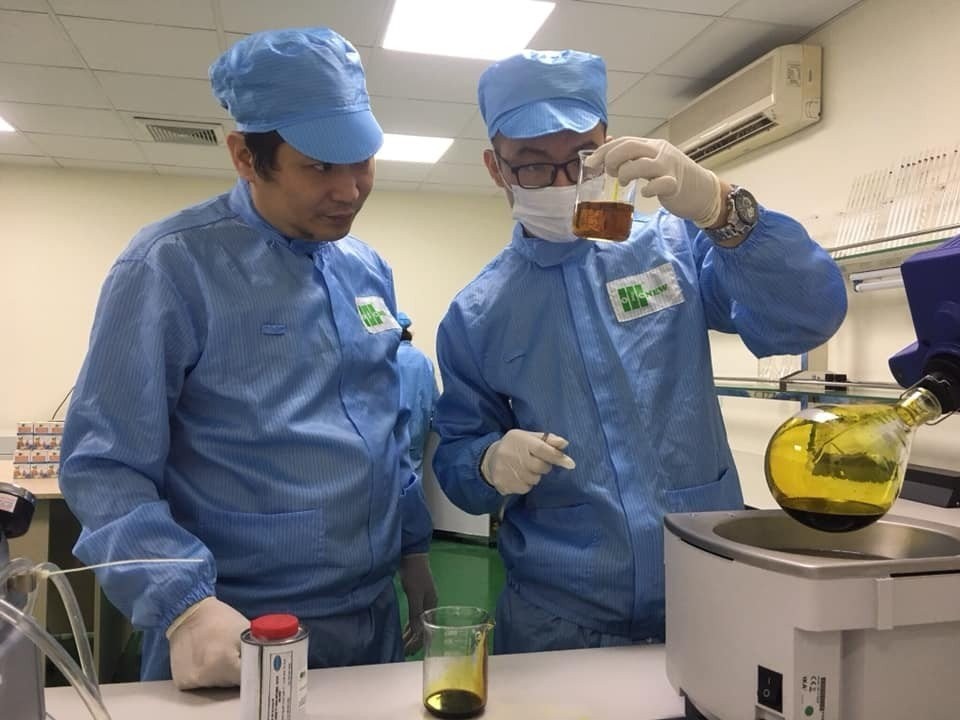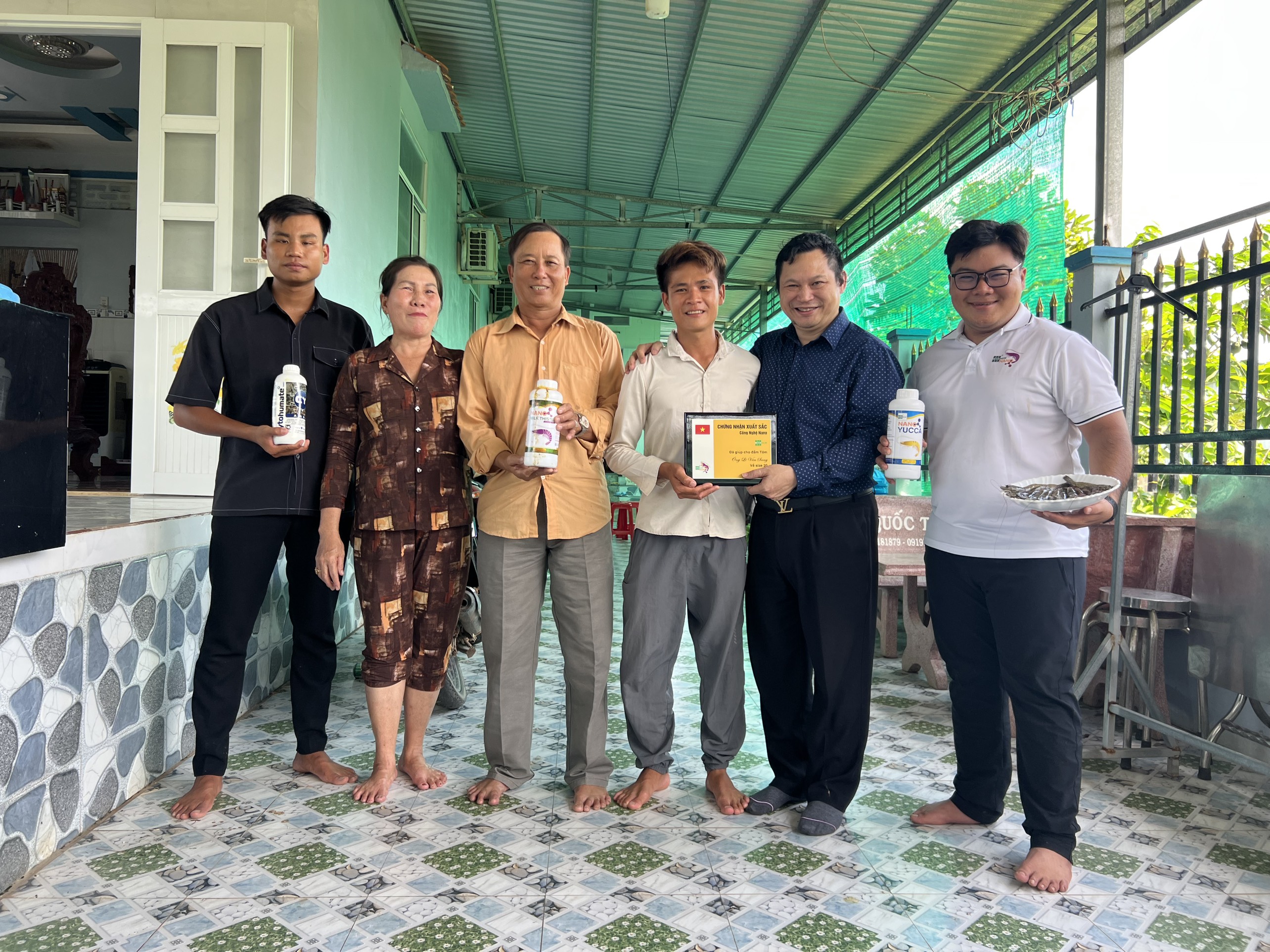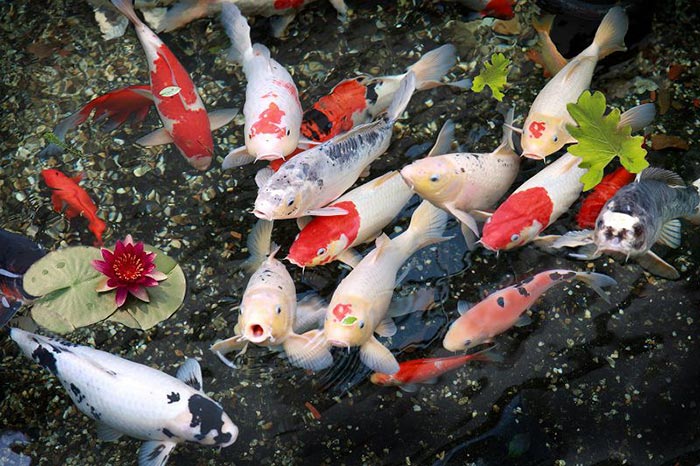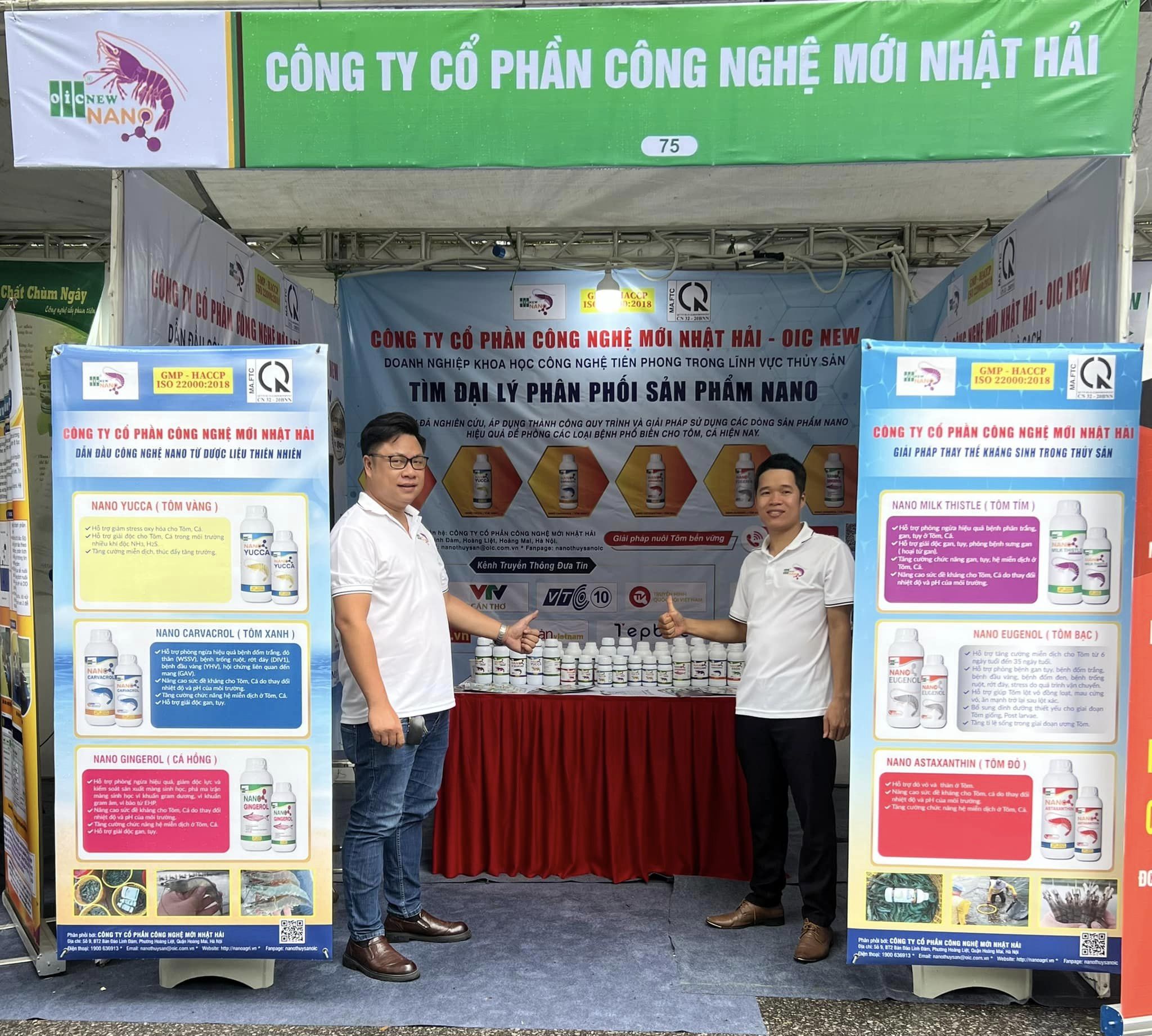On the 4th of April, 2023, the Science and Technology Enterprise Appraisal Council under the Hanoi Department of Science and Technology in the field of Fisheries agreed to issue certificates for 4 products: Nano Carvacrol (Green Shrimp), Nano Astaxanthin (Red Shrimp), Nano Eugenol (Silver Shrimp) and Nano Gingerol (Snapper) – Supplemental food products to support disease prevention for Shrimp are 4 products formed from science and technology results. This is the 9th assessment council for DNKHCN for OIC New.
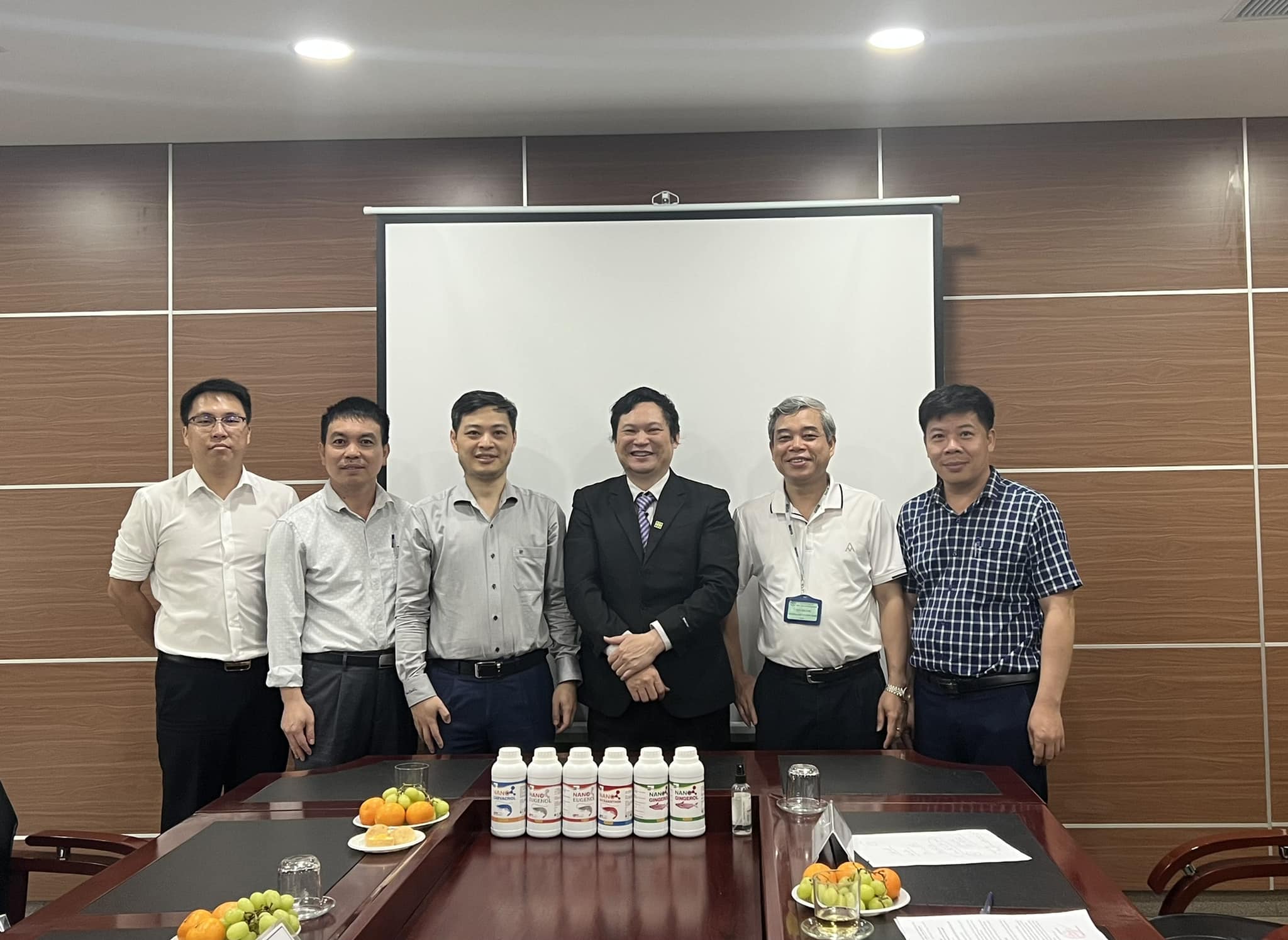
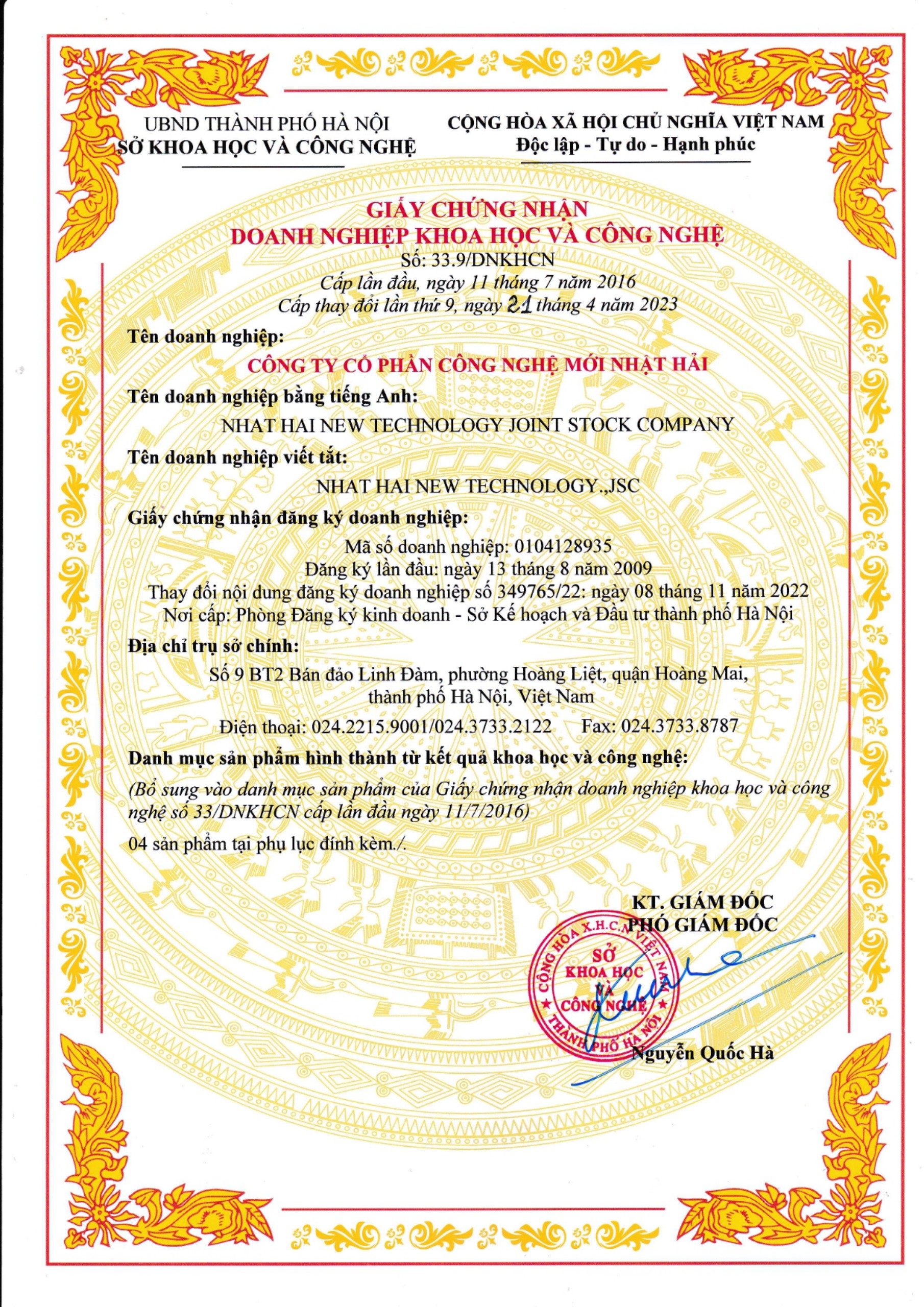
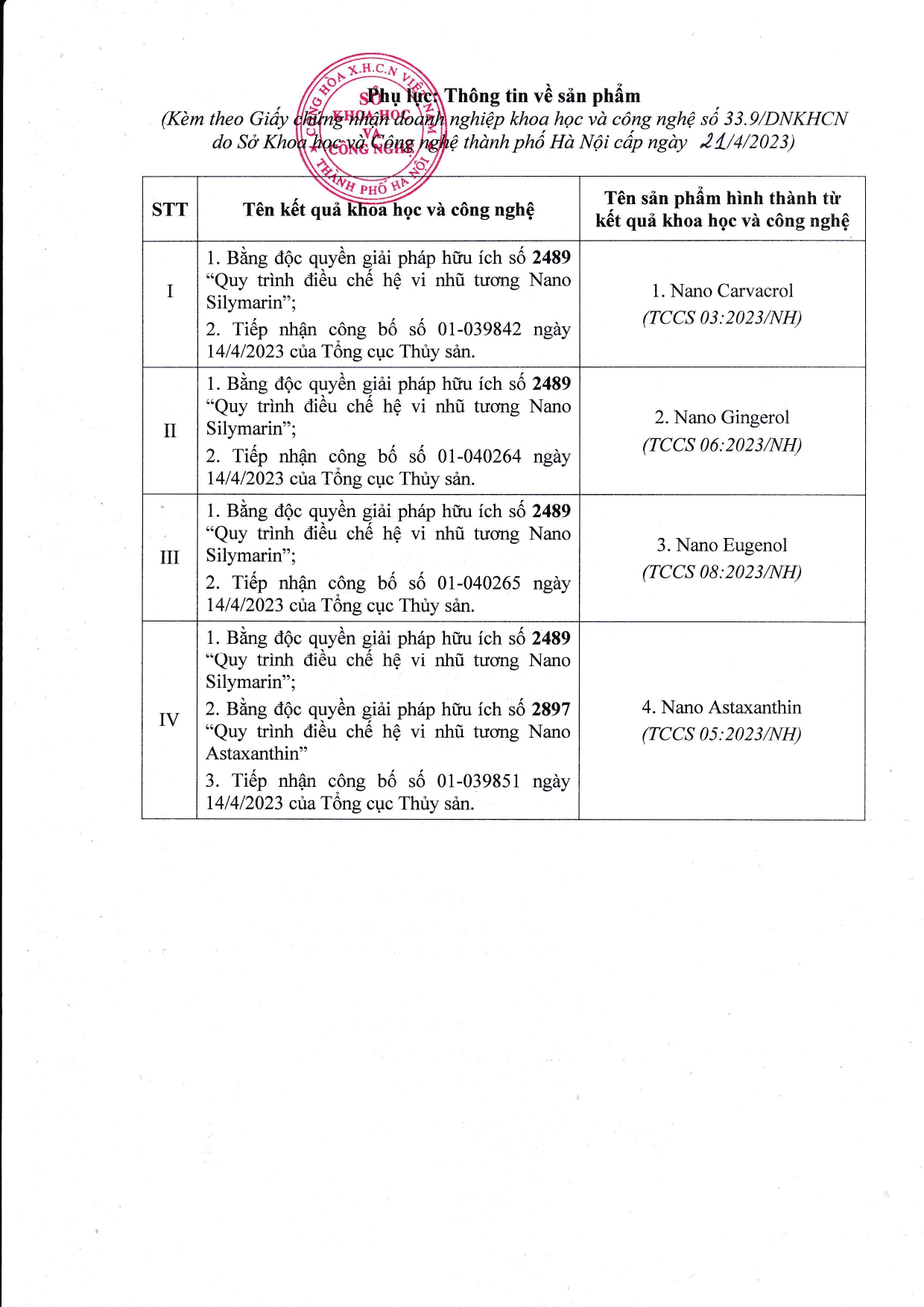
The Appraisal Council agreed to approve, issue a certificate of industrial enterprise and take photos with Inventor Luu Hai Minh
I. The process of research and application of scientific and technological results in production and business
1. The research idea comes from the needs of the aquaculture industry
1.1 Economic value of shrimp farming and issues raised
Shrimp is a valuable product, chosen by Vietnam’s agricultural sector as one of the key breakthroughs in restructuring the fisheries industry. In Vietnam, shrimp farming has developed very quickly and become a key economic sector. After a journey of nearly 40 years of development, up to now the farming area has reached over 720 thousand hectares and the output has reached nearly 690 thousand tons. Shrimp has become a key commodity in agriculture. Many large businesses have been interested in investing in the shrimp industry. Many large enterprises in the shrimp industry such as Minh Phu Group, Viet Uc Group… have brought Vietnamese shrimp into extremely demanding markets such as Japan, Korea, Australia, America and even European countries. According to a report from the Directorate of Fisheries, Shrimp export turnover in the first 10 months of 2021 reached 3.2 billion USD.
The expansion of production scale and the increasing level of intensification have led to the emergence of more and more dangerous pathogens that threaten the sustainable development of the shrimp farming industry and cause serious economic damage. Some of them that needed to be mention are hepatopancreatic disease (EMS), white feces disease (WFS), white spot disease (WSSV). White feces disease on shrimp has occurred in Asia since 2009. The disease usually occurs after about 50 days of stocking, causing slow growth of shrimp, unprofitable harvest and even mass death. White feces disease is suspected to be caused by the Vibrio bacteria group.
To prevent this disease, the pond must be prepared cleanly from the beginning, do not use moldy food, and limit the use of fresh food. During the farming process, strictly manage environmental factors and periodically use biological products to clean the environment. Periodically changing water and using antibacterial chemicals will help limit white feces disease, especially in times of hot weather and prolonged rain. Enhance digestive probiotics, help shrimp absorb food better, supplement vitamins and minerals to help shrimp improve health and reduce stress. Dead shrimp must be removed from the pond to avoid disease spread by healthy shrimp eating sick shrimp.
On the market today, there are drugs available to prevent and treat white feces disease in shrimp. These antibiotics, if used too quickly, increased in dosage or not used enough, will cause drug resistance, leading to prolonged treatment time, which is both expensive and ineffective.
White spot disease (WSSV) is caused by the White Spot Syndrome Virus (WSSV). Sick shrimp have many white spots ranging in size from 0.5 – 2.0 mm appearing inside the shell, especially the cephalothorax, the 5th and 6th abdominal segment and then spread throughout the body. Sick shrimp behave poorly, suddenly eat a lot then stop eating, swim lazily at the water surface or drift to the pond edge. Sometimes shrimp show signs of red body. When white spots appear after 3-10 days, most shrimp die in the pond (100%).
The overuse of antibiotics in aquaculture and antibiotic residues in aquaculture harms consumer health, is detrimental to the environment and causes damage to Vietnam’s seafood exports, causing many export shipments of seafood, especially shrimp exports of Vietnamese enterprises were warned by foreign competent authorities of chemical residues and were returned, causing great economic losses. This directly affects businesses and aquaculture farmers, causing them to suffer, even lose money and go bankrupt.
1.2. Alternatives to antibiotics in aquaculture
Currently, there are many antibiotic replacement methods that are expected to be commonly used, including: Currently, probiotics and biological products have been widely used and bring very good results. Phages are bacteria that “eat” bacteria and can cause disease and kill bacteria. The use of these organisms is a promising option, but small-scale testing of antibiotic peptides (AMPs) is still underway. It is essential in aquaculture to reduce potential sources of pollution, improve the balance of the bacterial environment in ponds to enhance the natural resistance of fish and shrimp. However, existing solutions mainly focus on treating diseases caused by viruses in aquatic products, and have not really focused on treating diseases caused by bacteria and parasites.
In some cases, antibiotics are still an irreplaceable option to prevent epidemics, but they need to be used reasonably and cautiously. In addition, one should not rely entirely on antibiotics, especially in the long term, to fight bacterial diseases. It is essential in the aquaculture context to reduce potential sources of pollution and improve the balance of the bacterial environment in ponds to enhance the natural resistance of fish and shrimp.
In addition, in the long term, it is necessary to build biosafety livestock and aquaculture facilities and limit small-scale farming to prevent and combat diseases and spread of bacteria. You should look for herbs or products made from beneficial bacteria to replace antibiotics. Tighten the free sale and purchase of antibiotics, moving towards only using antibiotics for therapeutic purposes.
Along with the trend of “clean” shrimp farming, antibiotics are gradually being limited in use in aquaculture, replaced by the use of preparations. One of the highly appreciated trends is the application of nanotechnology. The use of nanomaterials brings outstanding advantages such as: Limiting the use of biological products and antibiotics that are harmful to the environment, increasing targeting properties, and increasing the effectiveness of effects on pathogen cells leading to a reduction in antibiotic residues on shrimp, and at the same time treating water pollution in aquaculture.
2. Research process of OIC NEW
Nhat Hai New Technology Joint Stock Company – OIC NEW has many years of research on nanotechnology applied in health care and protection. Starting to enter this field in 2009, up to now, OIC NEW is the owner of more than 15 intellectual properties including 2 inventions, 13 useful solutions and 1 protected trademark, OIC has been developing and commercializing 35 health protection food products. Research and application of nanotechnology is still considered the company’s main strategy.
From 2020, the Company began research to diversify products. In addition to the health protection food product lines, OIC NEW targets nano product lines as food for shrimp, fish and some other aquatic animals.
OIC NEW has researched based on the following scientific bases:
– Silymarin is often used in the treatment of liver diseases such as impaired liver function, acute and chronic hepatitis, cirrhosis, fatty liver, degenerative necrosis, treatment of liver metabolic disorders, etc. As a flavonoid, silymarin can neutralize harmful free radicals, help stabilize liver cell membranes and prevent external toxins from infecting liver cells.
Astaxanthin is a red, fat-soluble carotenoid. It is a group of pigments present on some species of algae, yeast and seafood (salmon), giving muscles, skin, and eggs a yellow-orange or red color. Astaxanthin deficiency in shrimp diets is considered to be the cause of “Blue Syndrome”. In vitro studies have shown that astaxanthin has excellent antioxidant effects and is considered the “king of antioxidants”, higher than Vitamin E, Vitamin C or β-carotenes such as Lutein or Zeaaxanthin. Because of this outstanding antioxidant ability, astaxanthin is also known to protect organisms against a variety of diseases such as cardiovascular disease, cancer and some diseases related to the immune system. In the past 10 years, astaxanthin isolated from the green microalga Haematocuccus pluvialis has been used as a dietary supplement in European countries, America and Japan.
However, Astaxanthin and Silymarin have the disadvantage of low bioavailability due to the low solubility of Astaxanthin and Silymarin in water, which hinders its applications. Therefore, in the world there are many research projects to improve the bioavailability of Astaxanthin and Silymarin by reducing the particle size to nano and coating with a stabilizer to keep the particles from agglomeration, or creating small sized phytosome and liposome particles to increase solubility and absorption through the digestive system.
From the compiled literature, it can be seen that there are many processes to convert Astaxanthin and Silymarin into blue nanoparticles to increase solubility and absorption through the digestive tract. However, the synthesized Astaxanthin and Silymarin nanoparticles are still quite large in size. With this size, the ability to transport and distribute in the body’s circulatory system will be limited. Therefore, there is a high demand for a process to prepare a microemulsion system with particles that are smaller than 50 nm in size, evenly, have better solubility than water and still retain the structure and activity of Astaxanthin and Silymarin in the nanoization process.
Nhat Hai Company has invested in research with the aim of creating Astaxanthin and Silymarin products with high solubility, improved cell membrane permeability, stable activity, and high microemulsion durability.
3. Contribution from Nhat Hai’s research to Vietnam’s aquaculture industry
Compared with known solutions, the technical solution has created the following outstanding effects
First, allows for the resolution of bacterial and/or parasitic diseases.
Second, the product is created to replace antibiotics from active ingredients in the form of nano-microemulsions, including small nano particles, hydrophilic, non-adhesive, stable, evenly and good solubility in water and still retains the structure and activity of the active ingredients during the nanoization process and in the preparation, thereby increasing the bioavailability of the active ingredients. In addition, the active ingredients and ingredients used according to the invention disperse well in water, are highly safe, non-toxic and have few side effects, so it is very safe to use.
Third, reducing the use of antibiotics and the consequences that are difficult to overcome due to the overuse of antibiotics allows ensuring the quality of Vietnam’s seafood products to meet strict standards on antibiotic residues in major markets such as the EU, the United States, Japan, and Australia, thereby not only ensuring quality but also increasing economic benefits.
Fourth, the use of nano-products brings outstanding advantages including increased targeting properties and increased effectiveness of effects on pathogen cells, leading to a reduction in antibiotic residues on shrimp.
Fifth, these results help find disease-causing bacteria, which is a premise for developing further research to improve the ability to prevent and/or treat diseases, as well as contribute to increasing the number of shrimp productivity and output.
To summarize:
+ From the patent GPHI 2489 (Process for preparing Nano Silymarin microemulsion system), through the research and application process, 3 products have been formed: Nano Carvacrol, Nano Gingerol, Nano Eugenol.
| Numerical order | Ingredient | New point |
| 1. Nano Carvacrol | Silymarin (Extracted from milk thistle), Carvacrol, Polyphenols and excipients q.s. | The product reaches nano size. Combining and applying two active ingredients Silymarin and Carvacrol => creating optimal products |
| 2. Nano Gingerol | Silymarin (extracted from milk thistle), Gingerol (Ginger extract), Polyphenols and sufficient excipients | The product reaches nano size. Combining and applying two active ingredients Silymarin and Gingerol => creating optimal products |
| 3. Nano Eugenol | Silymarin (milk thistle extract), Eugenol (Clove oil extract), Polyphenols and excipients q.s. | The product reaches nano size. Combining and applying two active ingredients Silymarin and Eugenol => creating optimal products |
+ From the patent GPHI 2489 (Process for preparing Nano Silymarin microemulsion system) and the exclusive license GPHI 2897 (Process for preparing Nano Astaxanthin microemulsion system), through the process of research and application, a product has been formed: Nano Astaxanthin.
| Numerical order | Ingredient | New point |
| 1. Nano Astaxanthin | Milk thistle extract (Silymarin), carrot extract (β-Carotene), fish skin extract (Astaxanthin), Polyphenol and sufficient excipients. | The product reaches nano size. Combining and applying 3 active ingredients Silymarin, β-Carotene and Astaxanthin => creating optimal products |
II. Food supplements for Seafood – Outstanding effectiveness thanks to the application of Nano technology
OIC NEW has developed 4 basic standards:
1. TCCS 03:2023/NH – Aquaculture feed supplement Nano Carvacrol (Announced on January 16, 2023); QCVN 02-31-2:2019/BNNPTNT (Certificate of conformity No. 01100123 -MAFTC).
+ Main quality indicators include: Main active ingredient content Silymarin 2500 mg/L (3) Safety criteria (E.coli, Salmonella, Pb, Hg, As).
+ Ingredients: Milk thistle extract (Silymarin), thyme extract (Carvacrol), Polyphenol and sufficient excipients.
+ Uses:
- Improves resistance for Shrimp and Fish to changes in temperature and pH of the environment.
- Enhance immune system function in Shrimp and Fish.
- Supports liver and pancreas detoxification.
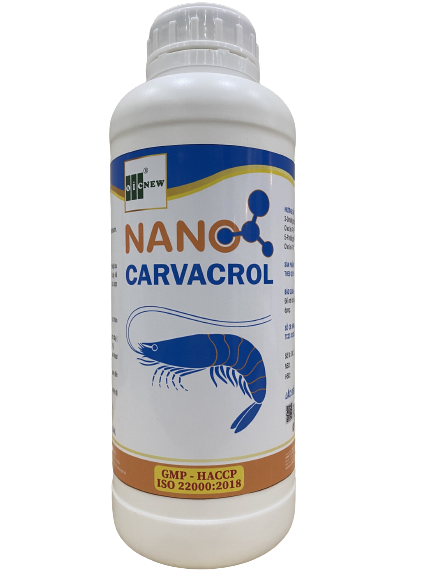
2. TCCS 05:2023/NH – Feed supplement for aquatic products Nano Astaxanthin (Announced on January 16, 2023); QCVN 02-31-2:2019/BNNPTNT (Certificate of conformity No. 01100123 -MAFTC)
+ Main quality indicators include: Main active ingredient content Silymarin 13000 mg/L (3) Safety criteria (E.coli, Salmonella, Pb, Hg, As).
+ Ingredients: Milk thistle extract (Silymarin), carrot extract (β-Carotene), fish skin extract (Astaxanthin), Polyphenol and sufficient excipients.
+ Uses:
- Supports redness of shell and body in shrimp.
- Improves resistance for shrimp and fish due to changes in temperature and pH of the environment.
- Enhance immune system function in shrimp and fish.
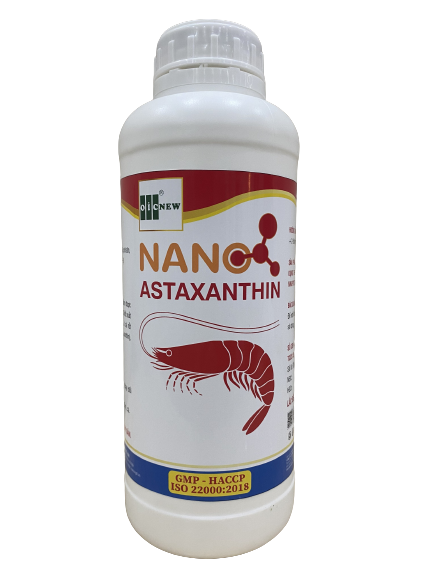
3. TCCS 06:2023/NH – Food supplement for aquatic products Nano Gingerol (Announced on January 16, 2023); QCVN 02-31-2:2019/BNNPTNT (Certificate of conformity No. 01100123 -MAFTC).
+ Main quality indicators include: Main active ingredient content Silymarin 4000 mg/L (3) Safety criteria (E.coli, Salmonella, Pb, Hg, As).
+ Ingredients: Silymarin (extracted from milk thistle), Gingerol (Ginger extract), Polyphenol and sufficient excipients.
+ Uses:
- Improves resistance for Shrimp and Fish to changes in temperature and pH of the environment.
- Enhance immune system function in Shrimps and Fishes
- Supports liver and pancreas detoxification
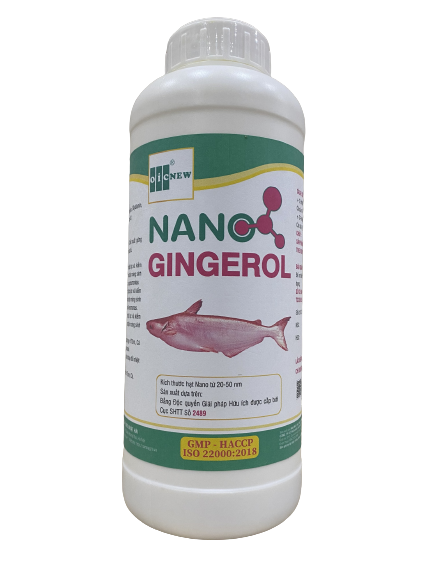
4. TCCS 08:2023/NH – Food supplement for aquatic products Nano Eugenol (Announced on February 20, 2023); QCVN 02-31-2:2019/BNNPTNT (Certificate of Conformity No. 01130223 -MAFTC).
+ Main quality indicators include: Main active ingredient content Silymarin 5000 mg/L (3) Safety criteria (E.coli, Salmonella, Pb, Hg, As).
+ Ingredients: Silymarin (extracted from milk thistle), Eugenol (extracted from clove oil), Polyphenol and sufficient excipients.
+ Uses:
- Supports prevention of hepatopancreatic disease, white spot disease, yellow head disease, black spot disease, intestinal emptying disease, bottom drop, anorexia disease, stress due to transportation
- Helps shrimp peel simultaneously, harden their shells quickly, and eat well again after molting
- Increase survival rate during shrimp nursery period.
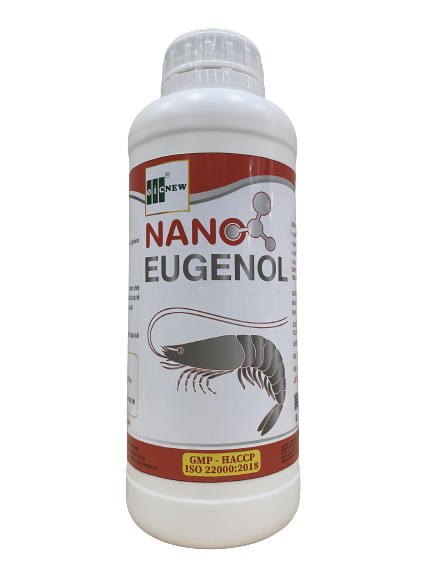
OIC NEW also sent samples to an accredited laboratory (VILAS 877- Center for drug-food testing and applied research) for quality testing. The test results showed that all indicators met the requirements as announced.
The product has also been certified by an independent unit (Center for Drug Control – Food and Applied Research) that 2 of Nhat Hai’s dietary supplement products comply with national technical standards QCVN 02-31-2: 2019/BNNPTNT (Decision No. 1445/QD-MAFTC-CNHQ dated 4th of November, 2022)
General assessment: The product is prepared from active ingredients in the form of nano-microemulsions, including small nano-sized particles, hydrophilic, non-sticky, stable, uniform and good solubility in water and still retains the structure and activity of the active ingredients during the nanoization process and in the preparation, thereby increasing the bioavailability of the active ingredients. In addition, the active ingredients and ingredients used according to the invention disperse well in water, are highly safe, non-toxic and have few side effects, so it is very safe to use. Preparations suitable as alternatives to antibiotics to inhibit pathogenic bacteria in shrimp include: The alternative use of antibiotics helps minimize the difficult to overcome consequences caused by the overuse of antibiotics, avoid or minimize large amounts of antibiotic residues in exported seafood shipments, and more importantly, the impact on human health when directly exposed or used and accumulates in the body.
OIC NEW is committed to providing customers and employees with the highest quality nano products, effective in preventing common diseases in Shrimp today.
————————————————-
For further information, please contact:
Nhat Hai New Technology Joint Stock Company
Address: No. 9 BT2 Linh Dam Peninsula, Hoang Liet, Hoang Mai, Hanoi
Phone: 1900 636913
Email: nanothuysan@oic.com.vn
Website: nanoagri.vn
Fanpage: Nano Fisheries








